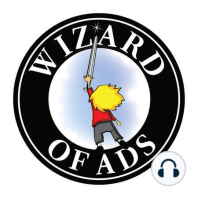2 min listen

Anastasia, Audrey, Alice and Shirley
Anastasia, Audrey, Alice and Shirley
ratings:
Length:
7 minutes
Released:
Sep 17, 2018
Format:
Podcast episode
Description
The feminine ideal was different a hundred years ago. Less sex, more charm.It was her charm that attracted us to young Anastasia Romanov, the daughter of Czar Nicholas II of Russia. This is why we refused to believe it when she was murdered in 1918 following the Bolshevik Revolution. For the next 50 years we embraced every impostor who claimed to be her.Elegant, effortless charm remained a feminine ideal as recently as 50 years ago. It’s what attracted us to the movies of Audrey Hepburn.Anastasia and Audrey represent the Regal Queen, one of the four feminine archetypes of Carl Jung.But Anastasia and Audrey were bumped aside by the blonde bombshells of Marilyn Monroe and Jayne Mansfield, poster girls for the objectification of women. And I mean “poster girls” quite literally. Marilyn was the centerfold in the first-ever issue of Playboy magazine, with Jayne following in her footsteps 17 months later.Marilyn and Jayne represent the Erotic Lover, another of the four feminine archetypes.Just as the Regal Queen was in vogue 100 years ago, so was the impudent ingénue. America was riveted by the antics of Alice Roosevelt, the mischievous young daughter of Teddy. And when Alice exited the White House, we replaced her with young Shirley Temple, the impetuous embodiment of Little Orphan Annie.This young “court jester” persona of Alice and Shirley and Little Orphan Annie is a sub-type of the Wise Woman archetype,which is the feminine variation of the masculine Wizard or Magician. It continues to this day as an icon of female empowerment in characters such as Katniss Everdeen from The Hunger Games, Lara Croft from Tomb Raider, Bella Swan from Twilight, and Hermione Grainger from the Harry Potter series.Girl Power.I’ve saved the first of the female archetypes for last, however, because Mother Eve is the least appreciated and most misunderstood.I blame the translators of the 1611 King James Bible.We meet Eve in the second chapter of Genesis when God says, “It is not good for man to be alone. I will make him an ezer kenegdo.” The King James version translates this as, “a help meet for him,” while other translations say “helpmate” or “helper.” (In 1611, meet meant appropriate.)This mistranslation in 1611 caused Christians to believe that the proper role of women was to be the “assistant,” or servant, to their man.The Hebrew term ezer kenegdo is notoriously difficult to translate. In fact, it appears nowhere in the Bible except the second chapter of Genesis.But we know for certain that it doesn’t mean “helper.” A more accurate translation would be “lifesaver.”Let’s look at the two separate words that form ezer kenegdo.Ezer is always interpreted as “power” or “strength” or “rescue.”Throughout the Bible, it speaks only of God, especially when you desperately need him to come through for you.“There is no one like the God of Jeshurun, who rides on the heavens to be your ezer.” – Deut. 33:26“Blessed are you, O Israel! Who is like you, a people saved by the LORD? He is your shield and ezer and your glorious sword.’ – Deut. 33:29“I lift up my eyes to the hills-where does my ezer come from?...
Released:
Sep 17, 2018
Format:
Podcast episode
Titles in the series (100)
Helping to Rebuild an Economy by Wizard of Ads Monday Morning Memo